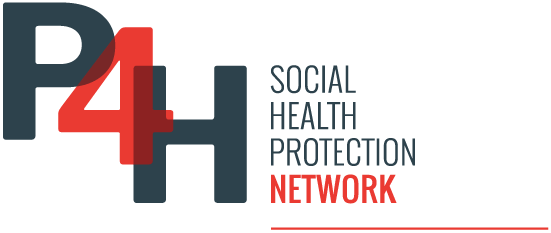This realist review of 67 studies identified 27 strategies to enhance migrant health in Iran, focusing on trust-building through intersectoral governance, inclusive insurance to reduce financial barriers, cultural competency to improve accessibility, and community or...
National Health Policy and factors predicting its implementation at the local level in Nepal
This study assessed the implementation of Nepal’s National Health Policy at the local level, finding that health workers had moderate awareness, with main challenges including inadequate infrastructure, limited skilled professionals, and insufficient funding. Regular...
Health insurance coverage among men and women in six countries within the Southeast Asia Region (2015–2022)
This study assessed health insurance coverage across six WHO Southeast Asia Region countries using Demographic and Health Survey data from 2015–2022. Coverage varied widely, with Indonesia showing the highest levels and Bangladesh and Myanmar the lowest, while...
UHC for the Silver Dividend: Building Health Systems for an Ageing India
India is experiencing a demographic shift, with a large youthful workforce and a rapidly growing elderly population projected to reach 193 million by 2030, highlighting the urgent need for a robust and equitable health system. Universal Health Coverage is essential to...
An evaluation of the impacts of health insurance coverage on wealth stratification in some selected sub-Saharan countries
This study examined the impact of health insurance policies on household wealth distribution in four sub-Saharan African countries—Burundi, Gabon, Ghana, and Rwanda—that have achieved healthcare coverage above 20% in pursuit of Universal Health Coverage (UHC) goals....
Lived experience of out-of-pocket costs of health care and medicines by people with chronic conditions and their families in Australia: a systematic review of the qualitative literature
Despite Australia’s Medicare, out-of-pocket costs (OOPC) still make up 14% of total health expenditure. This systematic review examined the experiences of Australians with chronic conditions facing OOPC for out-of-hospital care, revealing income loss due to ill...
The health system in Syria (2000–2024): assembling the pieces of a fragmented system—A scoping review
A recent scoping review synthesizing literature and data from 2000 to 2024 provides a comprehensive overview of Syria’s health system, aiming to guide post-conflict recovery efforts. The study highlights persistent challenges such as politicization of healthcare,...
Out-of-pocket cost and financial catastrophe of patients with cancer: the alarming cost-of-illness in Bangladesh
This study assessed the annual out-of-pocket (OOP) costs of cancer care for patients in Bangladesh, their coping mechanisms, and the financial distress they experienced. Using data from three hospitals, researchers estimated an average annual OOP cost of US$ 6,504 per...
Automatic Health Insurance Enrollment for Vulnerable Individuals: Opportunities for Egypt’s Universal Health Insurance System
This note offers insights on how Egypt can move forward to achieve automatic UHIS coverage for vulnerable groups. Automatic enrollment would help eliminate barriers to UHIS coverage, get rid of long queues for applicants, decrease the administrative burden on...
Social health insurance, health services utilization and procurement of private health insurance in Thailand’s multi-payer universal health system
Thailand’s entire population is insured under one of the three main public health insurance schemes: the Universal Coverage Scheme (UCS), the Social Security Scheme (SSS), and the Civil Servant Medical Benefit Scheme (CSMBS). This study investigated differences in...
Long-term financial sustainability of Rwanda’s universal health coverage model: Challenges and solutions (2011 – 2021) and Vision 2050
Since 2000, Rwanda has made remarkable progress toward universal health coverage (UHC) through a Community-Based Health Insurance (CBHI) system, but now faces chronic financial sustainability challenges as it aims for higher health-care standards under Vision 2050. A...
Private equity investment in long-term care: The case of Ireland
Private equity (PE) firms play a significant role in the financialisation of healthcare systems, yet research has largely overlooked their direct involvement, especially outside the U.S. This study investigates the drivers behind PE investments in Ireland’s long-term...
Impact of Medical Insurance Penetration and Macroeconomic Factors on Healthcare Expenditure and Quality Outcomes in Saudi Arabia
The study analyzed the determinants of the Healthcare Quality Index (HQI) in Saudi Arabia from 1990 to 2024 to assess both short-term dynamics and long-term relationships among key economic and healthcare variables. Findings reveal that, in the short term, GDP and...
Reconfiguring health purchasing for universal health coverage: insights from Nepal with relevance to low- and middle-income countries
Nepal's shift to federalism and the National Health Insurance Program (NHIP) aimed for universal health coverage, but persistent structural flaws undermine strategic purchasing and system efficiency. The Ministry of Health and Population’s conflicting roles as...
Healthier SG: a gateway for evolving public-private population partnerships in population health
Singapore’s new Healthier SG policy aims to integrate private general practitioners into the national primary care system via public-private partnerships, shared protocols, and unified IT and funding models. While the Ministry of Health has tackled several barriers to...
